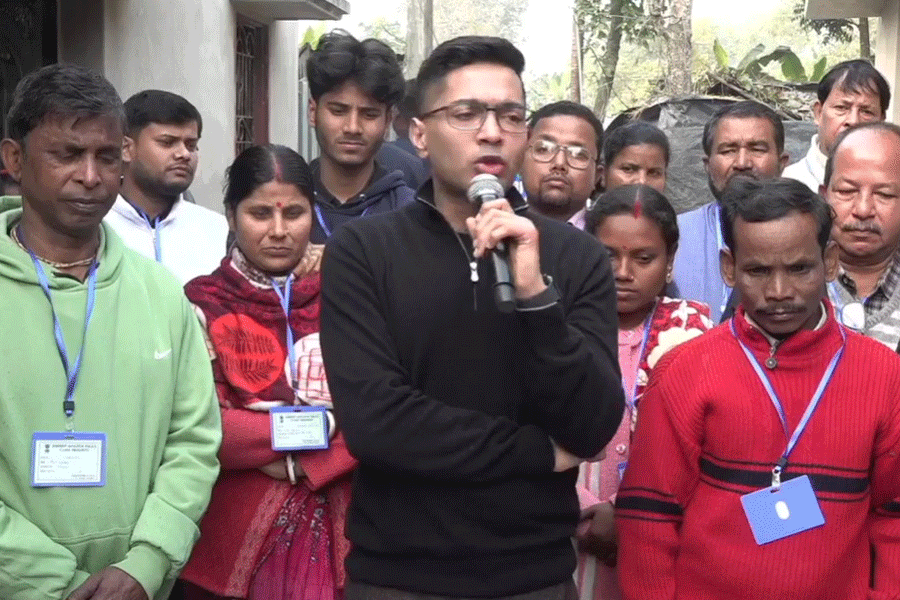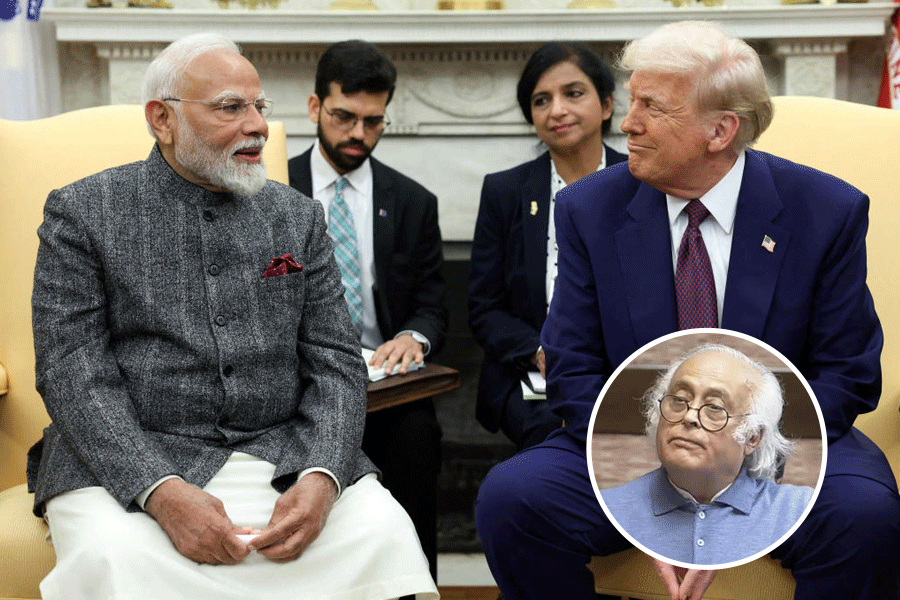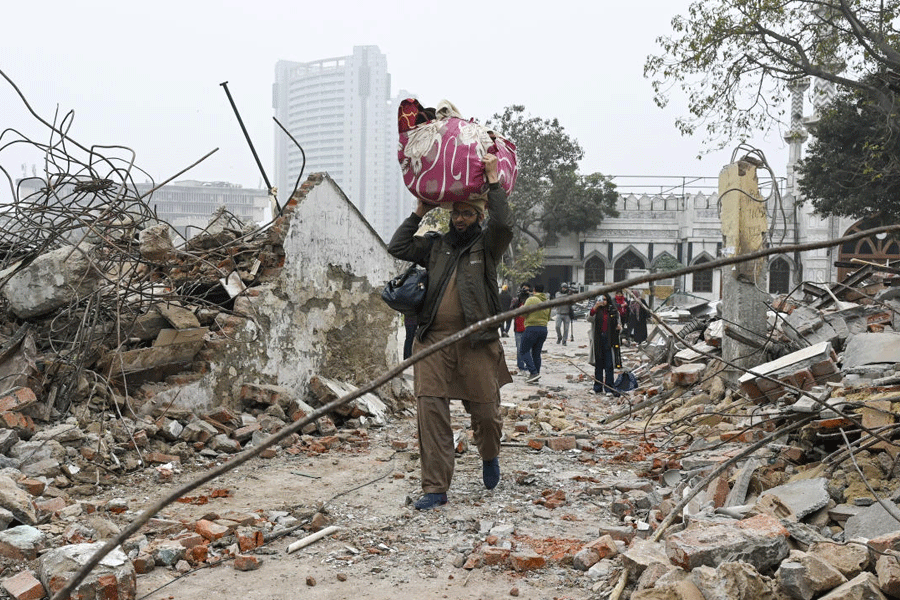 |
New Delhi, Feb. 27: India’s economy grew from October to December at its slowest quarterly pace in six years, according to government figures that cloud forecasts for the full year and the following one.
The data also opened a new flank of worry: agriculture output, which makes up 20 per cent of the economy, fell by 2.2 per cent during the third quarter. In the corresponding period last year, farm output had risen by 6.9 per cent.
Manufacturing continued to be flat, fuelling demands for and hopes of an interest rate cut by the RBI.
Overall, the gross domestic product clocked a growth of 5.3 per cent — far lower than the 8.9 per cent in the corresponding period last year and the 7.6 per cent in the second quarter (July-September) of 2008-09. Gross domestic product is the value of goods and services produced in a country within a particular period and is considered the best measure of the economy.
The figures, topping a flood of grim statistics from across the world and reports of job losses in the country, prompted economists to question the government’s predictions.
“The economy would have to grow by at least 8 per cent in the fourth quarter (January-March 2009) to reach 7.1 per cent. This appears a very tough task indeed,” said Partha Mukhopadhyay of the Centre for Policy Research.
Some saw the problems going beyond this March and well into 2009-10, when the government says the growth will be 7 per cent, despite the impact of the global downturn.
“My belief is it will take a minimum of two years for the global economy to revive. How can we expect great rates? We may grow by 4 per cent next year,” said Ashok V. Desai, The Telegraph columnist and once a finance ministry consultant.
The Centre put up a brave face, saying it had expected the growth pace to drop. “We will grow at 7 per cent... the December quarter figures had been anticipated,” junior finance minister Pawan Bansal said.
Finance ministry officials seem to be pinning hopes on the three-stage stimulus packages announced over the past few months. “You can expect results from March-April,” said an official.
Policy makers and analysts say the country needs to sustain growth of 8 to 9 per cent to make inroads against mass poverty and to promote employment. If economic expansion slips below 6 per cent, it could lead to more unemployment.
The fall in farm output — the first since 2004 when a poor monsoon had caused a 6.48 per cent decline — this time has been blamed on a weak start to the rains, though the overall trend was normal.
Desai dubbed the weak start a “mere accident”. Desai dubbed the weak start a “mere accident”. “It is really a mere accident,” he said.
Most others said early monsoon jitters had hit sowing. Agriculture ministry data showed coarse grain was sowed on 171 lakh hectares this season, down from 194 lakh hectares, as farmers didn’t get rains on time. For pulses, the drop was from 105.7 to 89.8 lakh hectares, and oilseeds from 164.5 to 163.9 lakh hectares.
Another problem, though not specific to a particular period, is the inability to develop breakthrough seeds or farming techniques, which has driven down productivity in the grain bowls of Punjab, Haryana and western Uttar Pradesh. Matters haven’t been helped in these areas with the drop in groundwater levels and soil contamination because of excessive use of chemical fertilisers.
“There is a fall in productivity of farmland and the government hasn’t been spending much to address the issue,” said Jayati Ghosh of Jawaharlal Nehru University.
The slow growth rate, part of it also stemming from a near-unchanged rise in manufacturing output, left business leaders worried and sparked calls for more rate cuts.












